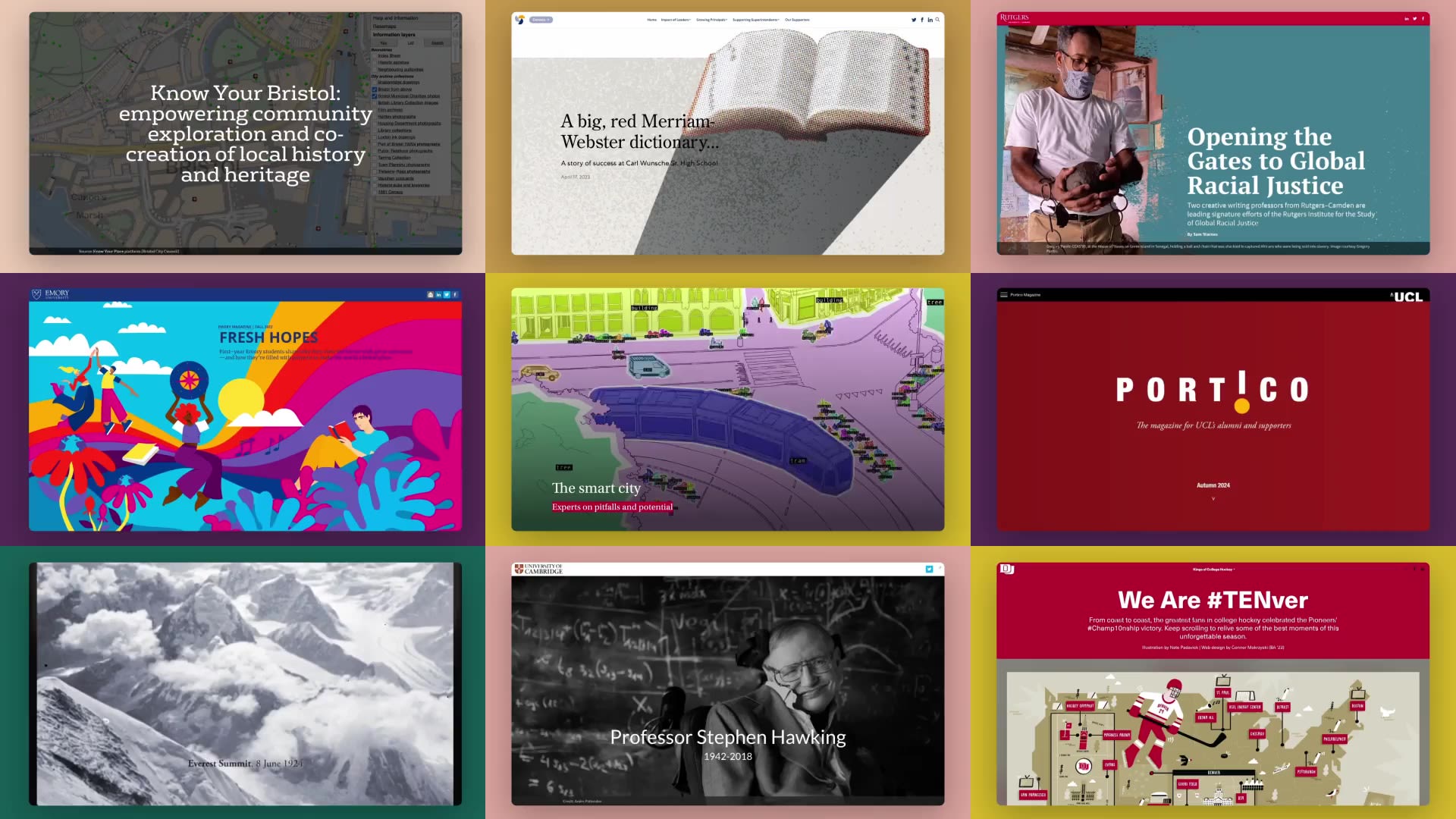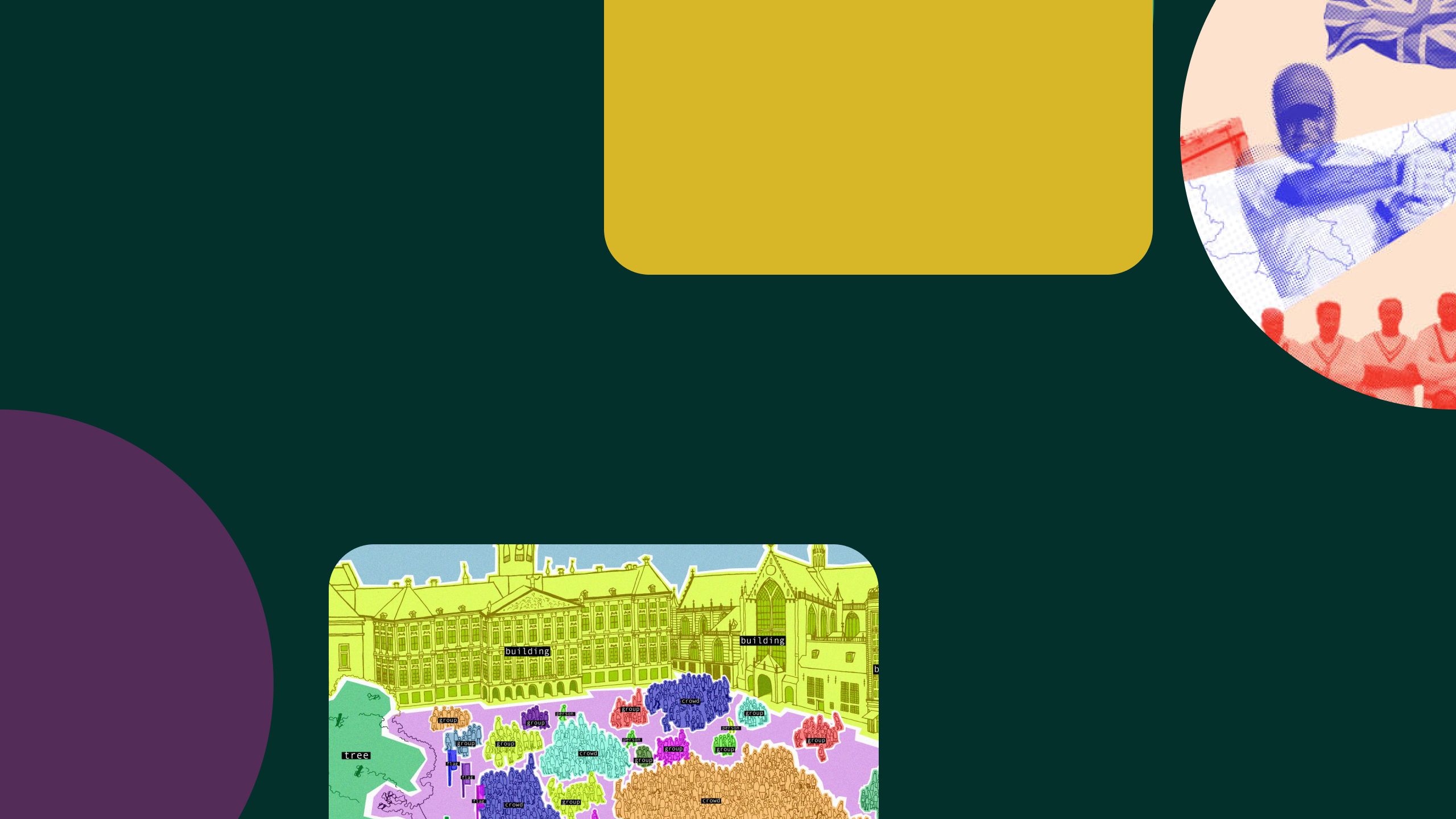How smart educational institutions build communities with visual storytelling

Educational institutions are using powerful storytelling to boost enrolments, celebrate research, and foster their communities. Here are nine fantastic examples of how they do it.
by Dawn Murden and Jenna Skinta
by Dawn Murden and Jenna Skinta
Publishing alumni and university comms that hold audiences' attention in a crowded media landscape can be a challenge. This article shares some of the work that shows if you can tell human stories with the right tools, you’ll create engaging and memorable material.
At Shorthand, we’re lucky enough to be the publishing platform of choice for a large number of educational institutions, so we’ve seen hundreds of examples of gorgeously engaging newsletters, alumni magazines, and research communications.
The best digital storytelling blends message, media, and calls-to-action, and there are lessons for any comms or content professionals in the examples below. Take a look!
We’ll cover:
9 brilliant stories from educational institutions

University of Cambridge
‘Professor Stephen Hawking’ tells the story of the late genius, who came to Cambridge in 1962 as a PhD student. This piece was published after Hawking’s death in 2018, and pays tribute with pictures, words, video and archival material.
It can be difficult to make scanned documents and historical photographs look good on the web; however, this story shows how to use Shorthand’s section types to present the artefacts in an engaging, full-screen format.
University of Amsterdam
‘Smart Cities’ shows how UvA researchers are examining the massive potential, pitfalls, and impact of a connected society. It explores the technology in an engaging way via a striking animation effect, which is achieved by layering images one after the other.
Emory University
‘Fresh Hopes’ is a simple piece that interviews 16 first year students at Emory about their hopes and dreams for the future. At its conclusion are a few different CTAs to other articles or information. Take note of the consistent style throughout, and the sharing buttons at the top right hand side.
Often these types of stories are shared in digital magazines, and such links are a great opportunity to chase that ‘never ending engagement’, signposting readers to other pages of interest.
Holdsworth Center
‘A big, red Merriam-Webster dictionary… A story of success at Carl Wunsche Sr. High School’ is one part of the Holdsworth 2023 Impact Report. It is a case study that celebrates the achievements of the Campus Leadership Program, which focuses on improving the quality of public schools. The article uses Scrollpoints to build its striking open animations — readers scroll to navigate to different parts of a larger image.
It’s one part of a larger report, and demonstrates that, by cutting up swaths of content into separate stories, publishers can aid the user experience — as long as there are clear points of navigation throughout the separate items.
University of Bristol
‘Know Your Bristol: empowering community exploration and co-creation of local history and heritage’ details an Arts and Humanities Research Council-funded collaboration, supported by Bristol University historians, that has enabled the wider Bristol community to create, explore, and preserve their local history.
It is beautifully designed throughout, with a consistent identity. A looping autoplay video, as well as foreground and background videos make it truly special.
University of Denver
‘Kings of College Hockey’ is one section of the University of Denver’s student and alumni Magazine. This section is about the university’s championship-winning hockey team. One story in particularly, ‘We are #TENver’, includes another great example of the Scrollpoints section, with one larger animated map scrolled through by the user.
Adding to the hook factor, UD adds Instagram embeds to the Scrollpoints, sharing posts from alumni communities in those locations.
Durham University
‘Eternal Ascent’ is the teaser to an online exhibition about a 1924 Everest expedition. With some custom code, the creators have reversed the scroll direction, so readers scroll upwards from the bottom, in a fun nod to climbing Everest as the story progresses.
UCL
Portico magazine is another great example of a University support and alumni magazine, a good one to look at for anyone considering digital magazines.
The landing page is simple, with tiles linking to the various features. It has a CTA at the end, and a burger navigation at the top left hand side.
a.
3 storytelling tips from Shorthand

1. Use a range of media
Firstly, use a range of multimedia to tell the story and bring your narrative to life. Some of the most memorable stories above use a mix of multimedia, whether that's background video to add a little bit of atmosphere, a foreground video to add flavour. There are also opportunities to embed other things that you're using as well, such as forms if you’re capturing data, or social embeds, like the use of Instagram in the UD story.
2. Tell human stories
Focus on human stories to pull the reader in and showcase the community impact of the institution.
The people behind educational institutions are proud of the work they’re doing. Often, making the stories more personal can create that emotional ‘hook’ for the reader.
For example, the Holdsworthy Centre placed a strong focus on the 42 students completing that exam — and the leadership of the people around them; it’s a very inspiring read. People remember these stories.
3. Include a CTA
For example, this could be a specific action that you would like the readers to take. So maybe for alumni it's about fundraising, or maybe impact reports. Think about different stakeholders you might be engaging with. Something as simple as including social media share buttons can make your work continue working for you after you’ve invested so much time and effort into it.
This article was inspired by the recent Shorthand webinar 'Higher ed comms: building community with storytelling'. Watch it now.
Try one of these free university comms templates.
Academic profile template
Campus newsletter template
Higher ed annual report template




